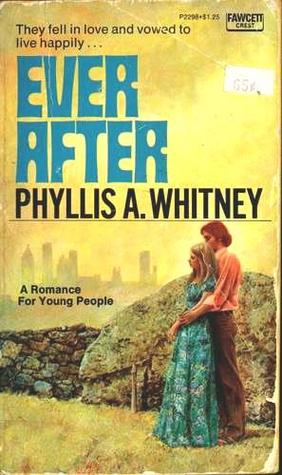Lee Wyndham
1961, Julian Messner
"Honestly, Beth, the way you stumble along, I expect you to fall over the flowers in the rug!" Mother said after an exasperating half-hour of walking and pivoting instruction in the living room.
New Jersey girl Beth is 17 when the painful comparisons to her cousin Lissa, a model since childhood, and an unfortunate experience in a school fashion show prompt her to enroll in charm school. Initially, all she wants is to learn some grace and poise, but a chance meeting with an arrogant young photographer spurs her to a long-derided ambition - modeling. She scrapes her way into the Queen's Agency and, upon graduation from high school, enters the world of modeling in New York City.
During the fifty-three minutes she had spent before Alex Turner's camera, she had eaten a bite out of seventeen generously spread peanut-butter sandwiches - and after the first nine or ten, it wasn't easy to "glow" over The Product.
Meanwhile, jaded child model Lissa is growing dissatisfied with her own lot, yearning toward Hollywood and jealous of her heretofore meek cousin's new confidence and ambition. Matters come to a head during an ice storm on a mountain, surprisingly enough. Matters between Beth and the treacherous photographer Amos resolve somewhat earlier; it will be no surprise that the two have chemistry.
Wyndham's books are always clear and well-written, and make the most of the careers highlighted. With such a glamorous career, though, she seems to have been overly cautious. There are nice bits about the realities of modeling, but not as much atmosphere as you might hope. There is one very funny scene when Beth, at a shoot to model a wedding gown, finds herself locked out of the church as a sympathetic crowd gathers around her, thinking she's been jilted.
Clothing porn, of course:
Her number was a swash-buckled black broadtail, supple as finest fabric and cut like a smart cloth coat, with a large notched collar and a saucy black beret to top it off.
But not as much as you'd expect. There is a sense of serious purpose about the career of modeling; history is given, techniques discussed, and it's made clear that Beth's half-hearted jump into the field has to become something more if she hopes to be a success.
Beth was impressed. John Robert Powers had founded the very first model agency. She had read about him and his famous "long-stemmed American Beauties" - Powers Girls who went on from modeling to earn fame and fortune in other fields as well: as actresses, motion-picture stars, fashion directors, designers, stylists, fashion-show producers.
At the end of the book is a short piece titled "If You Want To Be A Model." In italics is the advice "Don't let anyone "sell" you on the idea of doing anything which you suspect is not right or proper."
Other Editions
1964 Tempo paperback
-->
Author Bio
Jane Andrews Lee Hyndman aka Lee Wyndham was born in Russia in 1912. She came to the U.S. in 1923, and married in 1933. She worked in book publishing as an editor, for the Philadelphia Inquirer in the 1950s, and was a lecturer and columnist through the 1960s. This book draws on her own modeling experience. As a teacher at an NYU writing class, she taugh a young Judy Blume.
Young Adult Fiction
Candy Stripers, New York
Bonnie
Lady Architect, New York
Buttons and Beaux, with Louise Gallagher, New York
Golden Slippers, Vera Bock, illustrator, New York
Dance to My Measure, New York
Slipper Under Glass, Vera Bock, illustrator, New York
Camel Bird Ranch, Bob Riger, illustrator, New York
Children's Fiction
A Dance for Susie, Jane Miller, illustrator, New York
On Your Toes, Susie!
Susie and the Ballet Family, Jane Miller, illustrator, New York
Susie at Dance Camp
Family at Seven Chimney House
Sizzling Pan Ranch, Robert D. Logan, illustrator New York
Nonfiction
First Book of Opera
Writing for Children and Teen-agers, New York
Holidays In Scandinavia
Ballet For You
Thanksgiving, Hazel Hoecker, illustrator, New York
Fairy Tales
The Mermaid and the Three Magic Rings
Russian Tales of Fabulous Beasts and marvels, retold by Lee Wyndham
Tales of Ancient Araby, New York Watts , 1960
Tales from the Arabian Nights, Robert J. Lee, il, Racine, Whitman Publishing Co., 1965
Chinese Mother Goose Rhymes
The winter child; an old Russian folktale retold by Lee Wyndham






